The human body has evolved over time, but it has always been under the influence of gravity and on solid ground. We are not suited to live in confined spaces and microgravity environments like those found in space stations.
However, the most powerful trait of humans is our remarkable adaptability. We can adjust our bodies to adapt to new living environments in a very short time, which is why humans are distributed all over the globe.

Astronaut Valeri Vladimirovich Polyakov, who holds the record for the longest time spent in space.
In space, humans continue to break physical and psychological limits. The current record for the longest human time spent in a space station is 437 days and 18 hours, held by Russian cosmonaut Valeri Vladimirovich Polyakov. He achieved this record from 1995 to 1996.
However, there is a place even harsher than a space station, where humans can typically work for a maximum of 90 days. This place is inside operational nuclear submarines beneath the sea. Clearly, compared to a space station, this environment still maintains gravitational force, so why is it so difficult for people to work there for extended periods?
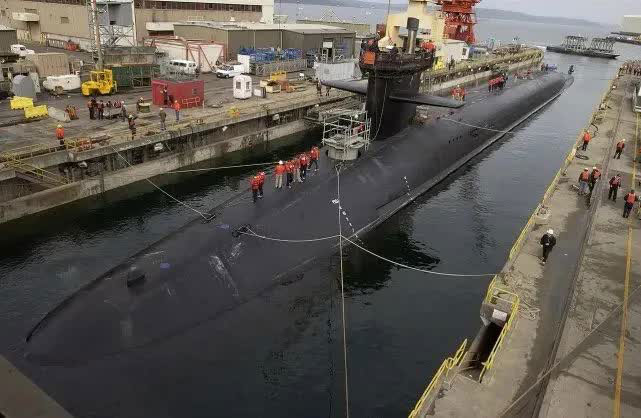
A nuclear submarine at port.
Nuclear Submarines Have Very Limited Living Space
Generally, nuclear submarines must operate underwater for extended periods. Diesel-powered submarines, on the other hand, must surface for a very short time to replenish oxygen.
This is true for any submarine, as they are not designed to be overly large. The largest submarine in the world currently is the Russian submarine “Dmitry Donskoy.” It boasts an impressive length of 175 meters and a width of 25 meters. For reference, conventional submarines typically range from 60 to 90 meters in length.

USS Ohio nuclear submarine of the US Navy.
The primary purpose of a nuclear submarine is not to explore the underwater environment, but to engage in combat and warfare. Therefore, most of the internal space is used to store weapons and equipment for underwater combat. Consequently, the living space for humans inside is very limited.
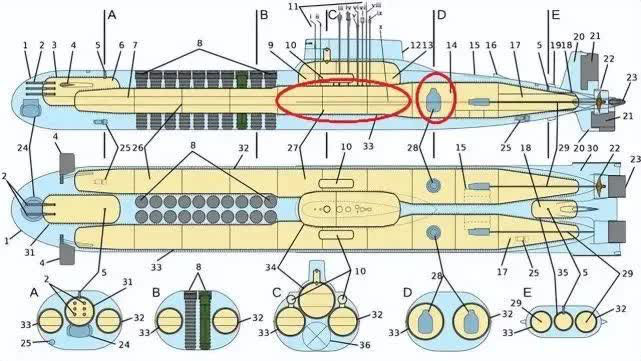
The circled area is the crew compartment and nuclear reactor area.
Even with the limited space available for the crew, due to the operational demands of nuclear submarines, each mission requires the participation of at least dozens of people. Imagine that a tank always requires 3-4 people to operate together.
The cramped living conditions, shared with many others, is one of the reasons life aboard a submarine can be quite challenging.
In contrast, on a space station, astronauts’ sleeping quarters are often equipped with a “window” so they can look down at Earth while resting. This is important as it can alleviate feelings of depression caused by confined spaces.

View from a window on the International Space Station (ISS).
However, such a feature does not exist on submarines, as there are no windows. In fact, having windows would be pointless because sunlight can only penetrate to about 200 meters, while the operational depth of nuclear submarines ranges from approximately 675 to 900 meters below the surface.
Therefore, it is no surprise that nuclear submarines operating underwater have no concept of day or night. In reality, for most crew members, they follow a unique living and working pattern. This is a 3×6 cycle, meaning that within each 18-hour period, there are 6 hours of work, 6 hours of rest (sleep), and 6 hours of leisure.
As mentioned earlier, submarines have very limited living space, so individuals take turns working and resting within this model to avoid overcrowding in certain areas.
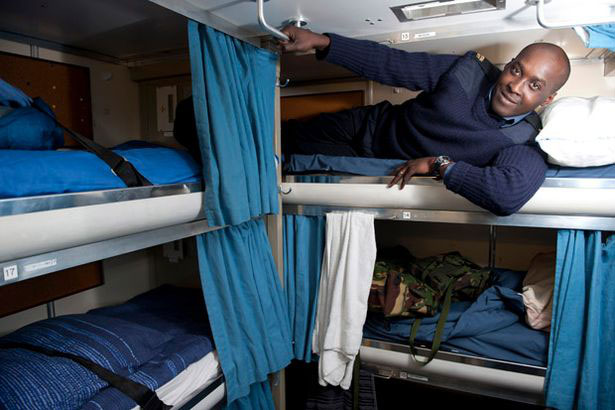
Cramped sleeping quarters on a submarine.
For instance, regarding sleeping arrangements, there certainly won’t be individual beds for dozens of people. After you have rested for about 6 hours, the next group will come to wake you up and sleep in the very bed you just occupied. In other words, the beds on submarines are communal.
It is clear that crew members on submarines have no personal space, which contributes to the difficulties of life aboard.
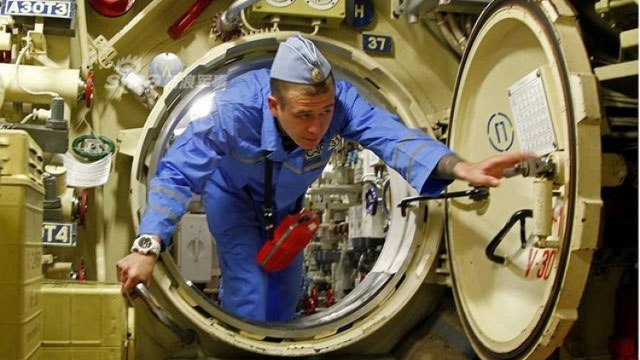
Cramped living space greatly affects human psychology.
What Is the Environment Like Inside a Submarine?
The cramped living space means that the air quality inside the submarine becomes stuffy and odorous.
Although the entire submarine is equipped with air cooling systems, the overall temperature inside the vessel will still reach between 30 to 35 degrees Celsius. Therefore, crew members not only live in a small space but also have to work in high temperatures.
It is believed that the most spacious area in the submarine is the dining room, which is why many crew members gather there. However, this area also has the highest temperature, with maximum temperatures potentially exceeding 38 degrees Celsius.
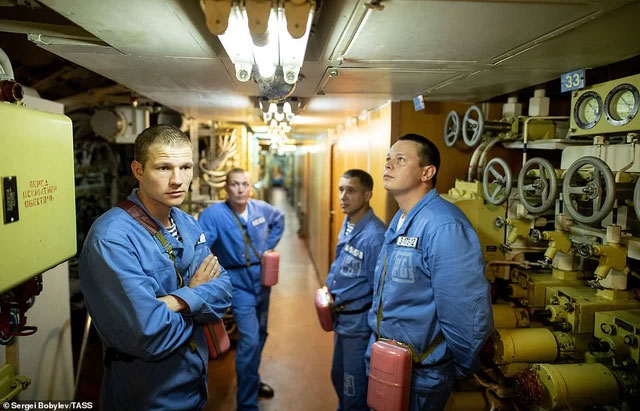
High-temperature working environment also affects human psychology.
Even when it’s hot, the supply of water is still very limited. Essentially, water is only used for drinking and cooking, making bathing on a submarine a luxury.
Imagine the smell in the air in such a confined space, where dozens of large men rarely bathe and continuously sweat. Currently, there are no female crew members on submarines worldwide due to privacy concerns.
In fact, the smell of the air is hard for those inside to perceive because our brains easily filter out signals deemed unnecessary—including olfactory signals.

Washing machine and sink on a submarine.
However, the air inside the submarine has another characteristic: its oxygen content is quite low, only about 18%. This level is significantly lower than the oxygen content on land, which is approximately 21%.
According to some veterans who have served on submarines, setting the oxygen level this low is essentially to reduce the risk of fire and explosion. This is because everything is harder to ignite in a low-oxygen environment.

Wounds take longer to heal in low-oxygen environments.
But this creates many inconveniences for those living in it. Besides difficulty breathing, dizziness, and fatigue, the most significant issue is that the low oxygen levels make it difficult for the body to heal from injuries.
Of course, under normal conditions, fatal accidents on submarines are quite rare. Therefore, this may not have a significant impact.
However, the low oxygen concentration can also make it hard for people to remain calm, and with the cramped living space, almost all crew members tend to appear angry and irritable.
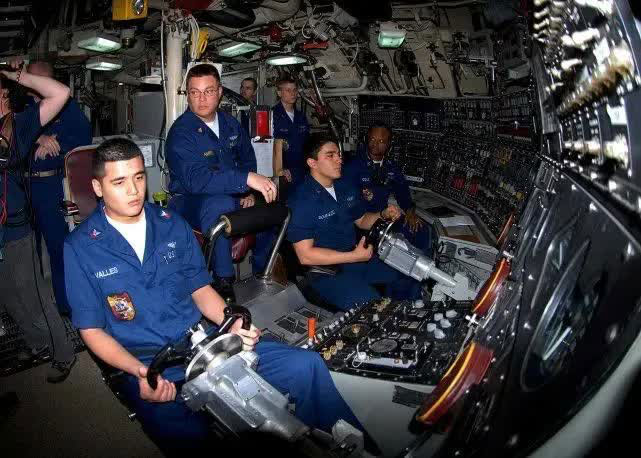
A working shift inside a submarine.
Clearly, living in this environment is not easy. Meanwhile, their lives are also very busy. Not only do they eat, sleep, and operate the submarine, but the crew members must also participate in high-intensity learning tasks to ensure that everyone understands the operations of the vessel throughout the mission.
Additionally, one of the characteristics of submarines is stealth, meaning any signal could potentially reveal their location. Therefore, crew members are completely prohibited from establishing communication with the outside world. Of course, modern technology allows them to write emails to contact their families. However, this involves issues of news security, and communication content can be monitored, which severely limits information exchange.
All of this has made life on a submarine so difficult and challenging that even a well-trained individual cannot endure it for an extended period.

Crew members are completely prohibited from establishing communication with the outside world.
It can be said that whether in a space station or on a nuclear submarine, those living and working there face significant challenges. On one hand, they contribute to the advancement of humanity, and on the other, they protect security and peace. All of this deserves respect and admiration.


















































